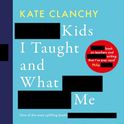When his debut novella A Walk in the Night was published in Nigeria in 1962, then clandestinely disseminated throughout his homeland, a new star of Black South African writing came into view with astonishing alacrity. This remarkably assured first work, written while its author was under house arrest for his political journalism and anti-apartheid activism, articulated many of the themes which would come to dominate Alex La Guma’s writing over the next 20 years: fierce opposition to apartheid, lyrical celebration of his working class community, potent use of nature as a mirror for the psychology of his protagonists and, perhaps most distinctively, a sensuous and ornate prose style, heavily infused with a Dickensian realism.
This year has been full of celebrations of the 200th anniversary of Dickens’ birth. But it is worth sparing more than a thought for La Guma—whose work has the sweep and moral power of his Victorian predecessor—and his formidable but neglected oeuvre.
Hewn from the miasma of poverty and oppression that was the enclave of District Six on the outskirts of Cape Town, A Walk in the Night unrepentantly celebrated the lives, hopes and fragile dreams of the down-and-outs, prostitutes, skollie boys and gangsters who inhabited this tawdry, bohemian slum. The protagonists in the novel are very tellingly all “coloured,” to use La Guma’s phrase. (Here I employ the word, like La Guma, in the wholly non-pejorative usage specific to the South African context, designating the racial group, which, as a result of several centuries of métissage, incorporated indigenous Khoi and San tribes, West African slaves, Dutch settlers, Malay indentured labourers and even some Caribbeans). The title’s Shakespearean allusion (a quotation from the ghost scene in Hamlet) set the tone for La Guma’s body of work in which he seamlessly combines and juxtaposes the coloured proletarian plight with a style deeply influenced by the Western literary canon.
Reflections on what it meant to be coloured in the South African apartheid era are central to his work, but this may also explain La Guma’s relative obscurity in today’s post-apartheid South Africa, and abroad. Often deemed “too black to be white and too white to be black” (an error, as colouredness as a black identity is based less on skin shade per se, so much as culture), coloureds have long functioned as a distinct subset of the Black South African experience, divorced from “Africans” by dint of different languages (Afrikaans and English, as opposed to tribal ones like Xhosa or Zulu), culture and history.
A Walk In The Night tells the story of Michael Adonis, a young coloured man who, after being sacked from his factory job following a confrontation with his racist Afrikaner boss, embarks upon a nocturnal odyssey of crime and murder amidst the squalid tenement blocks of District Six. Police brutality, racism, chance encounters, patricide and the pain of deracination all play their part in the novel’s terse, bleak greatness. It is a multi-layered work of passionate and often startling intensity. The book succeeded in giving the coloured community a much-needed voice, and what’s more, a humane and dignified one, with no trace of chest-thumping stridency.
His second novel And A Threefold Cord dealt with a family of coloured shanty dwellers on the Cape Flats. Set against the iniquities of police brutality, township squalor and apartheid decadence, this was a compassionate portrait of human misery and defiance. The stark reality of the lives of the ostracised and the impoverished was never depicted with bitterness or self-pity, but simply with an eye for detail.
The Stone Country (his prison-based third offering) and In The Fog of The Season’s End, a novel chronicling the machinations of the underground anti-apartheid resistance movement, ought to have sealed his literary reputation. His last novel Time of the Butcherbird was an apocalyptic, vengeance-driven masterpiece. It tells the tale of Shilling Murile, an African man who kills his village’s Afrikaner oppressor when faced with the forced removal of his people. Here, in this final creative flourishing, one can sense that the days of the apartheid regime are numbered, and that, after decades of being wronged, it is now time for cathartic black revenge. The novel was published in 1979, six years before La Guma’s untimely death from a heart-attack, whilst serving as the ANC’s political representative in Cuba.
So why do we not hear more about La Guma today and why is A Walk In The Night not celebrated as a modern classic? Apart from winning one minor literary prize in 1969 (the Afro-Asian Writers’ Association Lotus Prize), La Guma’s work has been consistently overlooked in favour of arguably lesser, but more politically expedient authors. Despite several recent biographies and critical works, he has singularly failed to move beyond the confines of marginal black South African protest writing and hermetic PhD theses onto the mainstream stage dominated by his white and now Black African (as opposed to coloured) counterparts.
To what can we attribute this sad turn of events? Some would argue that his work is dated, a product of a now obsolete Marxist literary aesthetic of art in the service of politics. Others might point to the inter-ethnic rivalries of the new Rainbow Nation, where coloureds, especially in the Cape (where they are still in the majority) are now being marginalised at the expense of those deemed to be bona fide “Africans.” According to this view, La Guma has been overlooked because the colouredness which he eloquently celebrates in his novels was unpalatable both to the old Afrikaner and now to the new and unashamedly Afrocentric government. There are those, too, who see his florid, almost Ciceronian prose style as overwrought and out of step with the more spare style that rules modern literary fiction today. Maybe it is a combination of all these factors.
Whatever the reason, it is high time for this demeaning neglect to stop. La Guma’s novels are superb works of literature, highly crafted and stylistically complex, with a devastatingly original use of imagery. Moreover, to see his novels as too didactic in their anti-apartheid stance is too simplistic. Whilst abhorring the wrongs of racism, capitalism and prejudice, La Guma was no mere preacher. He lived and died a consummate storyteller, full of warm humanity and palpable compassion for the downtrodden and oppressed, wherever they might be found.
La Guma’s oeuvre is that rare thing: a truly harmonious marriage of aesthetics and politics, of art for art’s sake and literature in the service of human liberty and dignity, and as such, it deserves to be celebrated far more widely. In the pantheon of great writers, let alone great African writers, his name deserves not mere inclusion, but a special place.
La Guma helped to herald a new wave of Black South African writing, from Peter Abrahams and Richard Rive to Achmat Dangor’s award-winning Bitter Fruit. More importantly, his novels have helped to instill several generations of coloured people with a tangible sense of pride and racial dignity.
Arguably, La Guma achieved something far greater than the prizes and critical acclaim of fellow South African novelists like JM Coetzee and Nadine Gordimer: his was a victory won against horrendous odds, albeit one couched in seductive, melancholy and spell-binding prose which captured the seedy underbelly of coloured Cape Townian life. And for that, at least, we must be grateful.
—Read More: Hannah Rosefield's homage to another underrated great: the Victorian poet Robert Browning
Forgotten colossus
May 21, 2012












